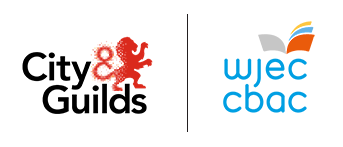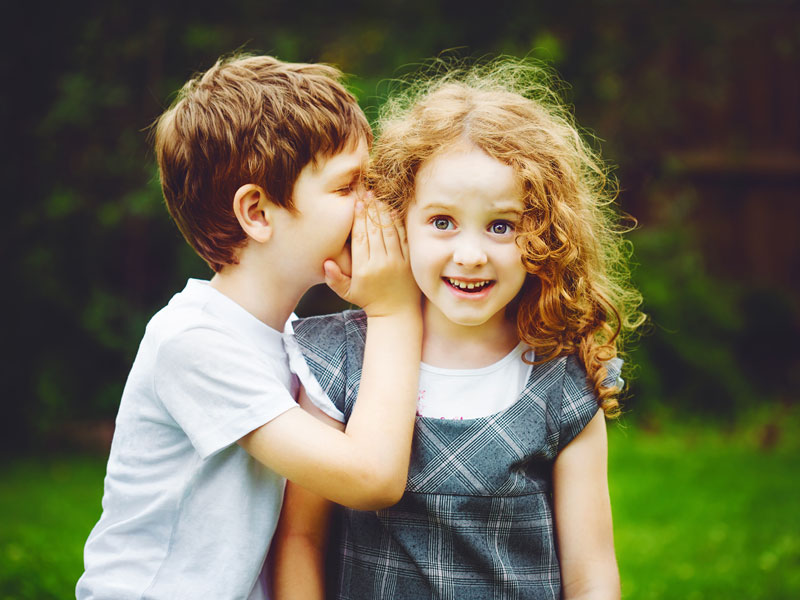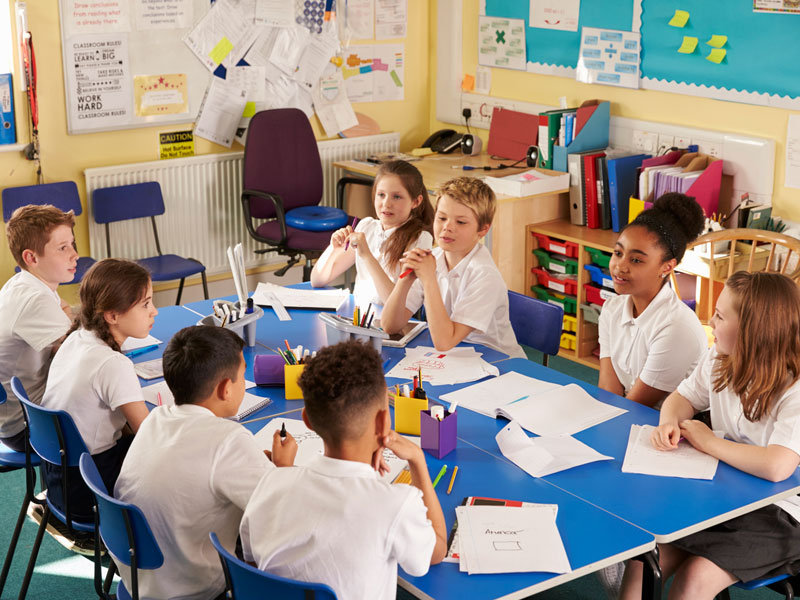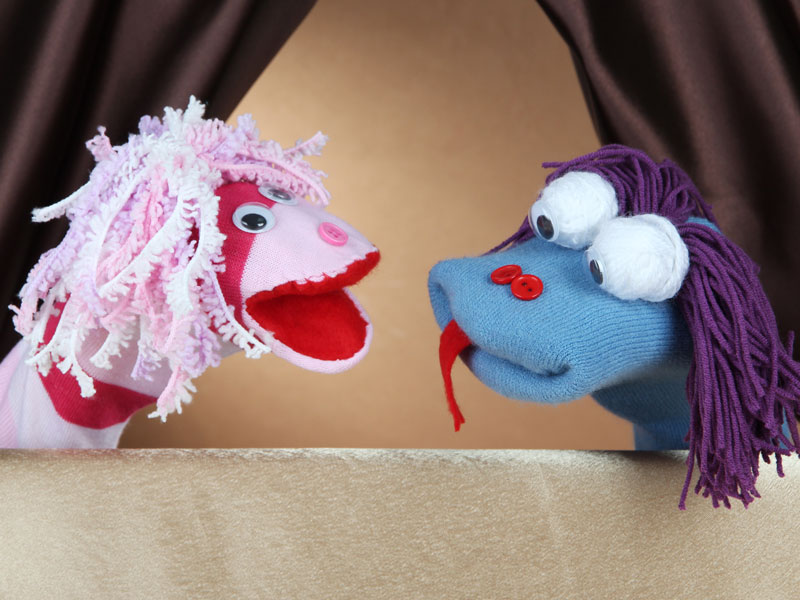




Speech - The expression of words, thoughts and feelings by articulate sounds.
Language - Communication by either speech or written word.
Communication - Sharing information by writing, speaking or another medium.
Communication is fundamental to children’s development; children need to be able to understand and be understood. Communication is the foundation of relationships and is essential for learning, play and social interaction.
Speech and language communication enables children to build positive relationships, form friendships and learn by listening, talking and questioning. Good speech, language and communication skills have a positive impact on confidence and self-esteem. By interacting and playing using speech and language, a child or young person develops social skills and friendships that support their well-being. As children learn and use new vocabulary, they gain confidence in speech and learn to express their feelings which will mean that their needs are met. Good speech, language and communication skills support educational achievement and employment opportunities.
If a child or young person has difficulties with speech, language and communication, they are more likely to have difficulty in developing reading and writing skills, have behaviour difficulties and difficulty in forming friendships and making social connections. Difficulty in expressing themselves causes frustration and isolation. Many children and young people with speech, language and communication difficulties have significant behavioural difficulties or are withdrawn which may result in a negative impact on confidence and self-esteem. Poor communication has an impact on mental health, employment opportunities and links closely to poor educational achievement and poverty.
Lleferydd – Mynegi geiriau, meddyliau a theimladau drwy ynganu seiniau.
Iaith – Cyfathrebu naill ai ar lafar neu'n ysgrifenedig.
Cyfathrebu – Rhannu gwybodaeth drwy ysgrifennu, siarad neu drwy gyfrwng arall.
Mae cyfathrebu yn hanfodol i ddatblygiad plant; mae angen i blant allu deall a chael eu deall. Cyfathrebu yw sylfaen cydberthnasau ac mae'n hanfodol ar gyfer dysgu, chwarae a rhyngweithio cymdeithasol.
Mae iaith, lleferydd a chyfathrebu yn galluogi plant i feithrin cydberthnasau cadarnhaol, gwneud ffrindiau a dysgu drwy wrando, siarad a chwestiynu. Mae sgiliau iaith, lleferydd a chyfathrebu yn cael effaith gadarnhaol ar hyder a hunan-barch. Drwy ryngweithio a chwarae gan ddefnyddio iaith a lleferydd, bydd plentyn neu berson ifanc yn meithrin sgiliau cymdeithasol a chyfeillgarwch sy'n cefnogi eu llesiant. Wrth i blant ddysgu a defnyddio geirfa newydd, byddant yn magu hyder yn eu lleferydd ac yn dysgu sut i fynegi eu teimladau, a fydd yn golygu y bydd eu hanghenion yn cael eu diwallu. Mae sgiliau iaith, lleferydd a chyfathrebu da yn cefnogi cyflawniad addysgol a chyfleoedd cyflogaeth.
Os oes gan blentyn neu berson ifanc anawsterau iaith, lleferydd a chyfathrebu, bydd yn fwy tebygol o'i chael hi'n anodd meithrin sgiliau darllen ac ysgrifennu, cael anawsterau ymddygiad a'i chael hi'n anodd gwneud ffrindiau a ffurfio cysylltiadau cymdeithasol. Os bydd plentyn neu berson ifanc yn ei chael hi'n anodd mynegi ei hun, bydd yn teimlo'n rhwystredig ac yn ynysig. Mae llawer o blant a phobl ifanc sydd ag anawsterau iaith, lleferydd a chyfathrebu yn wynebu anawsterau ymddygiad sylweddol neu'n mynd yn encilgar, a all arwain at effaith negyddol ar hyder a hunan-barch. Mae cyfathrebu gwael yn cael effaith ar iechyd meddwl a chyfleoedd cyflogaeth, ac mae cysylltiad agos rhwng hyn a chyflawniad addysgol gwael a thlodi.

Speech, language and communication delays and disorders can have a significant impact on a child’s overall development and well-being. If a speech, language and communication delay is unresolved it may have an impact on other areas of a child’s development e.g. a child who is unable to communicate their needs and wishes will become increasingly frustrated and there will be an impact on their behaviour, self-esteem and development. A child or young person with speech, language and communication difficulties may struggle to socialise and form friendships and become isolated, withdrawn or depressed. If young children have speech, language and communication difficulties they will struggle from an early stage to settle in school and learn.
Early intervention gives an increased chance of a resolution of issues at an early stage. It prevents problems with understanding and learning that will impact on a child’s educational achievement, enables them to form relationships and promotes confidence and self-esteem. The earlier the intervention in speech, language and communication delays, the better the outcome is likely to be.
Mae oedi yn natblygiad iaith, lleferydd a chyfathrebu, ac anhwylderau yn gysylltiedig ag iaith, lleferydd a chyfathrebu, yn cael effaith sylweddol ar ddatblygiad a llesiant cyffredinol plentyn. Os na chaiff oedi yn natblygiad iaith, lleferydd a chyfathrebu ei ddatrys, gall gael effaith ar feysydd eraill yn natblygiad y plentyn, e.e. bydd plentyn na all gyfleu ei anghenion a'i ddymuniadau yn mynd yn gynyddol rwystredig a bydd effaith ar ei ymddygiad, ei hunan-barch a'i ddatblygiad. Gall plentyn neu berson ifanc ag anawsterau iaith, lleferydd a chyfathrebu ei chael hi'n anodd cymdeithasu a gwneud ffrindiau, a mynd yn ynysig, yn encilgar neu'n isel ei ysbryd. Os oes gan blant bach anawsterau iaith, lleferydd a chyfathrebu, byddant yn ei chael hi'n anodd setlo yn yr ysgol a dysgu, a hynny ar gam cynnar.
Mae ymyrryd yn gynnar yn cynnig mwy o bosibilrwydd y caiff problemau eu datrys yn gynnar. Mae'n atal problemau gyda dealltwriaeth a dysgu a fydd yn effeithio ar gyflawniad addysgol plentyn, yn ei alluogi i wneud ffrindiau ac yn hybu hyder a hunan-barch. Gorau po gyntaf y bydd yr ymyriad yn achos oedi yn natblygiad iaith, lleferydd a chyfathrebu, o ran y canlyniadau tebygol.
Staff in the childcare setting have concerns about 3 year old Toni’s speech development. Why is it important that they seek help and advice as soon as possible?
Mae gan y staff yn y lleoliad gofal plant bryderon ynglŷn â datblygiad lleferydd Toni, sy'n 3 oed. Pam mae'n bwysig eu bod yn ceisio cymorth a chyngor cyn gynted â phosibl?
Answers to include:
Gall yr atebion gynnwys:

Multi-agency working brings together people from different sectors and with different expertise to support children, young people and families. By working together and sharing their skills they are able to ensure the best outcomes for a child or young person. They will communicate and meet regularly to discuss a child or young person’s individual needs and provide targeted support as appropriate. The composition of a team will vary according to the needs of an individual child or young person.
There are a number of professionals and individuals who may work together if a child has speech, language and communication difficulties. Each has their own expertise and knowledge that can support a child or young person. Their combined expertise can be used to ensure positive outcomes.
Health visitor - Undertakes routine assessments of children’s speech, language and communication and can identify issues at an early stage.
Speech and language therapist - Can suggest strategies and interventions to support a child or young person.
Education psychologist - Will be involved if there are other learning difficulties.
Doctor - Will identify if there is a medical problem underlying the difficulty e.g. tongue tied, glue ear, hearing impairment.
Teachers - Teachers are able to implement strategies suggested by other professionals and help to monitor and review progress.
Other professionals may be involved according to the child and young person’s individual needs and circumstances e.g. social services, police, community groups, Flying Start professionals.
Mae gweithio amlasiantaethol yn dod â phobl ynghyd o sectorau gwahanol sydd â gwahanol fathau o arbenigedd er mwyn cefnogi plant, pobl ifanc a theuluoedd. Drwy gydweithio â'i gilydd a rhannu eu sgiliau, gallant sicrhau'r canlyniadau gorau i blentyn neu berson ifanc. Byddant yn cyfathrebu ac yn cwrdd yn rheolaidd i drafod anghenion unigol plentyn neu berson ifanc ac yn darparu cymorth wedi'i dargedu fel y bo'n briodol. Bydd cyfansoddiad y tîm yn amrywio yn ôl anghenion plentyn neu berson ifanc unigol.
Gall nifer o weithwyr proffesiynol ac unigolion gydweithio â'i gilydd os bydd gan blentyn anawsterau iaith, lleferydd a chyfathrebu. Mae gan bob un ei arbenigedd a'i wybodaeth ei hun a all gefnogi plentyn neu berson ifanc. Gellir defnyddio eu harbenigedd cyfunol i sicrhau canlyniadau cadarnhaol.
Ymwelydd iechyd – Cyflawni asesiadau arferol o iaith, lleferydd a chyfathrebu plant a gall nodi problemau'n gynnar.
Therapydd iaith a lleferydd – Gall awgrymu strategaethau ac ymyriadau i gefnogi plentyn neu berson ifanc.
Seicolegydd addysg – Bydd yn cael ei gynnwys os oes anawsterau dysgu eraill.
Meddyg – Bydd yn nodi p'un a oes problem feddygol yn sail i'r anhawster, e.e. cwlwm tafod, clust ludiog, nam ar y clyw.
Athrawon - Gall athrawon weithredu strategaethau a awgrymir gan weithwyr proffesiynol eraill a helpu i fonitro ac adolygu cynnydd.
Gall gweithwyr proffesiynol eraill gael eu cynnwys yn unol ag anghenion ac amgylchiadau unigol y plentyn neu'r person ifanc, e.e. gwasanaethau cymdeithasol, yr heddlu, grwpiau cymunedol, gweithwyr proffesiynol Dechrau'n Deg.
Drag the roles to the correct professionals
Llusgwch y rolau at y gweithwyr proffesiynol cywir
Well done. You have matched them all correctly.
Da iawn. Rydych wedi paru pob un yn gywir.
Professional Gweithiwr Proffesiynol |
Role Rôl |
Correct answers Atebion cywir |
|---|

A variety of play activities can be used to support language and communication. During play activities, children and young people work alongside others developing language and social skills by talking, listening, paying attention and asking questions.
Some examples are:
Creative play - talking about what is being painted/made. Talking about colours textures.
Physical play - talking about pace (fast and slow), counting steps and movements (up and down).
Sand play - talking about going to the beach, full and empty buckets, heavy and light buckets, how the sand feels.
Water play - talking about floating and sinking, above and below, different objects in the water.
Books and story time - listening to stories, responding to questions, recalling events.
Puppets - talking about feelings, expressing emotions.
Role play - acting out scenarios, expressing feelings, talking to others.
Small world toys and construction - acting out scenarios, imaginary conversations.
Songs - learning language patterns.
Sensory activities - talking about different textures, smells, tastes.
Circle time/registration - talking about weather, news.
Snack and lunchtime - time for social conversations.
Gellir defnyddio amrywiaeth o weithgareddau chwarae i gefnogi iaith a chyfathrebu. Yn ystod gweithgareddau chwarae, bydd plant a phobl ifanc yn gweithio ochr yn ochr ag eraill gan feithrin sgiliau iaith a sgiliau cymdeithasol drwy siarad, gwrando, talu sylw a gofyn cwestiynau.
Dyma rai enghreifftiau:
Chwarae creadigol – siarad am yr hyn sy'n cael ei baentio/ei wneud. Siarad am liwiau, gwead.
Chwarae corfforol – siarad am gyflymder (cyflym ac araf), cyfrif camau a symudiadau (i fyny ac i lawr).
Chwarae â thywod – siarad am fynd i lan y môr, bwcedi llawn a gwag, bwcedi trwm ac ysgafn, sut mae'r tywod yn teimlo.
Chwarae â dŵr – siarad am arnofio a suddo, uwchben ac islaw, gwahanol wrthrychau yn y dŵr.
Llyfrau ac amser stori – gwrando ar straeon, ymateb i gwestiynau, dwyn digwyddiadau i gof.
Pypedau – siarad am deimladau, mynegi emosiynau.
Chwarae rôl – actio senarios, mynegi teimladau, siarad ag eraill.
Teganau byd bach a theganau adeiladu – actio senarios, sgyrsiau dychmygol.
Caneuon – dysgu patrymau iaith.
Gweithgareddau synhwyraidd – siarad am wahanol weadau, arogleuon, blasau.
Amser cylch/cofrestru – siarad am y tywydd, newyddion.
Amser byrbryd a chinio – amser am sgyrsiau cymdeithasol.